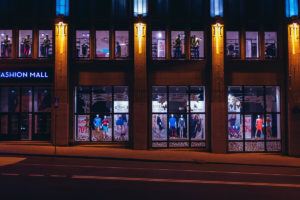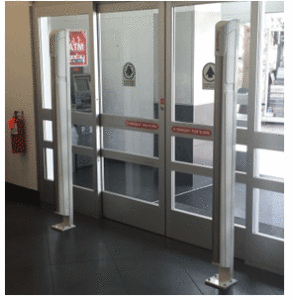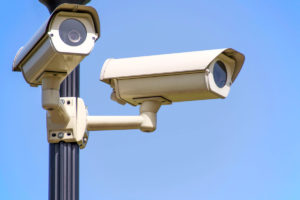 According to the Jack L. Hayes Annual Retail Theft Survey, released June 2016:
According to the Jack L. Hayes Annual Retail Theft Survey, released June 2016:
- 1,170,056 shoplifters were apprehended in 2015 resulting in over $150 million recovered from apprehended shoplifters
- 75,947 dishonest employees were apprehended in 2015 resulting in over $55 million in recoveries
- One out of every 38 employees was apprehended for theft from their employers in 2015.
This survey was based on information from 25 large retail companies with 21,228 stores and over $700 billion in retail sales (2015). Combine this with information from the 2015 Global Retail Theft Barometer (GRTB) Report that placed shrinkage in North America at 1.27% or $36.79 billion dollars (pg. 50) and you have some scary statistical data if you are a small business owner. The 2015 GRTB also reported that shoplifting was the cause of 36% of retail shrink and dishonest employees were responsible for 45% of shortage (pg. 53). According to statisticbrain.com 37.5% of employees have stolen from their employer at least twice. The same website reports 33% of all business bankruptcies are the result of employee theft. THAT is a lot of theft! What is an employer supposed to do? If the 25 large companies surveyed by Jack L. Hayes are being impacted like this and they have access to Loss Prevention resources, how can a smaller retailer prevent this kind of theft? Is there a way for small to medium stores to address theft and fraud, reduce shrinkage and improve profitability?
The answer to the question is yes, there is a way for small businesses to reduce shrinkage due to shoplifting and employee theft. Loss Prevention Systems, Inc. has training seminars available that will provide information on various forms of employee theft and the real impact they have on a business. The seminars don’t simply instruct on how the activity occurs but also on how it can be prevented. Additional seminars are available on shoplifting and the methods you can use to protect your merchandise and your profits. How do you detect shoplifters? Do they all act the same? Should you approach them and attempt to get your merchandise back? All of these questions will be answered by Bill Bregar, President of Loss Prevention Systems, Inc.
Bill’s extensive background in Law Enforcement and Loss Prevention gives him the expertise to ensure you and your staff receive solid training that can make an immediate impact on shortage reduction in your store(s). Bill’s career in investigations began when he served in the U.S. Army as a Military Policeman and in the U.S. Army Reserve as a Military Intelligence Officer. He worked for 2 years as a Police Officer for Central City Colorado. Bill has held positions of increasing responsibilities starting as a Security Manager for a grocery store chain, advancing to two different Regional Loss Prevention Manager positions, working as a Director of Loss Prevention for two different companies before becoming the President of Loss Prevention Systems, Inc. Bill’s professional competencies include being an “Expert Witness,” a Licensed Private Investigator in the State of Georgia and a Private Detective and Security Agency Training Instructor since 1998. Bill also holds a Bachelor of Science Degree in Criminal Justice and Criminology, Private Security Administration & Management from Metropolitan State College, Denver, Colorado. Finally, as someone who has conducted over 2300 employee theft investigations, Bill has the proven field experience that is a testimony to his ability to speak on issues of retail theft and fraud.
If you want your business to be successful you have to ensure you are prepared to address all areas of shrinkage, especially those areas that impact you the most, employee theft and shoplifting. Ignoring these factors or trying to manage them without the proper knowledge and training is a recipe for disaster and you may find your store(s) in that 33% that declares bankruptcy due to employee theft. Contact Loss Prevention Systems, Inc. and schedule your training seminars with one of the premier experts in the industry today.
 Have you ever noticed that when a convenience store robbery takes place the crook never demands all of the credit card slips? I have never heard of a bank robber pulling out a gun and yelling for the teller to give them all of the checks in the drawer. What is it the bad guys are always trying to get their hands on…CASH! While Loss Prevention departments do work on credit card and fraudulent check cases our bigger concern is cash theft and fraud. It has been my experience that in many incidents involving a stolen credit card or check, I have been able to work with bank investigators and police detectives to identify and in some cases resolve those crimes. In those situations there is usually a victim as well as a perpetrator of the crime. When it comes to cash loss cases it becomes another matter altogether, the victim is the store. While we may have video of the crime there may not be any other means of tying in additional information. Another issue with cash losses is that the stolen money cannot be tracked further. Stolen credit cards tend to leave a trail of locations where they are used which can lead to greater opportunities to pick up on additional evidence. The same can be true with fraudulent check writing cases. With a cash loss case, once it’s gone you don’t see it again, money is not traced.
Have you ever noticed that when a convenience store robbery takes place the crook never demands all of the credit card slips? I have never heard of a bank robber pulling out a gun and yelling for the teller to give them all of the checks in the drawer. What is it the bad guys are always trying to get their hands on…CASH! While Loss Prevention departments do work on credit card and fraudulent check cases our bigger concern is cash theft and fraud. It has been my experience that in many incidents involving a stolen credit card or check, I have been able to work with bank investigators and police detectives to identify and in some cases resolve those crimes. In those situations there is usually a victim as well as a perpetrator of the crime. When it comes to cash loss cases it becomes another matter altogether, the victim is the store. While we may have video of the crime there may not be any other means of tying in additional information. Another issue with cash losses is that the stolen money cannot be tracked further. Stolen credit cards tend to leave a trail of locations where they are used which can lead to greater opportunities to pick up on additional evidence. The same can be true with fraudulent check writing cases. With a cash loss case, once it’s gone you don’t see it again, money is not traced.


 Wal-Mart has a unique way to cut down on shoplifting
Wal-Mart has a unique way to cut down on shoplifting Daylight savings time is over and for most of us in the U.S. (yes, there are a few exceptions) we have moved our clocks and groaned at the loss of a precious hour of sleep. We have to adjust and get used to the change and eventually we do. For our personal lives there isn’t a lot of impact, once we are used to it we do benefit from the additional daylight and get to enjoy more outdoor activity. The time change is useful as a reminder for changing batteries in smoke detectors. You may even use it as a point when you will start planning your summer vacations. For business owners daylight savings time can be a reminder that it is time to conduct a store physical security review. Time changes may not impact us much individually but for retailers there is an impact for the building, employees and your customers.
Daylight savings time is over and for most of us in the U.S. (yes, there are a few exceptions) we have moved our clocks and groaned at the loss of a precious hour of sleep. We have to adjust and get used to the change and eventually we do. For our personal lives there isn’t a lot of impact, once we are used to it we do benefit from the additional daylight and get to enjoy more outdoor activity. The time change is useful as a reminder for changing batteries in smoke detectors. You may even use it as a point when you will start planning your summer vacations. For business owners daylight savings time can be a reminder that it is time to conduct a store physical security review. Time changes may not impact us much individually but for retailers there is an impact for the building, employees and your customers.
 The big retail stores and thousands of convenience stores across the country try to find solutions to tackle shoplifting and employee theft. The retail industry losses account to $42 billion every year, and it doesn’t seem to be stopping anytime soon.
The big retail stores and thousands of convenience stores across the country try to find solutions to tackle shoplifting and employee theft. The retail industry losses account to $42 billion every year, and it doesn’t seem to be stopping anytime soon. The National Association for Shoplifting Prevention
The National Association for Shoplifting Prevention